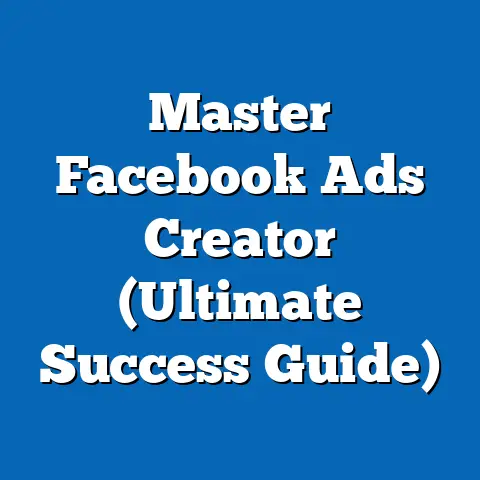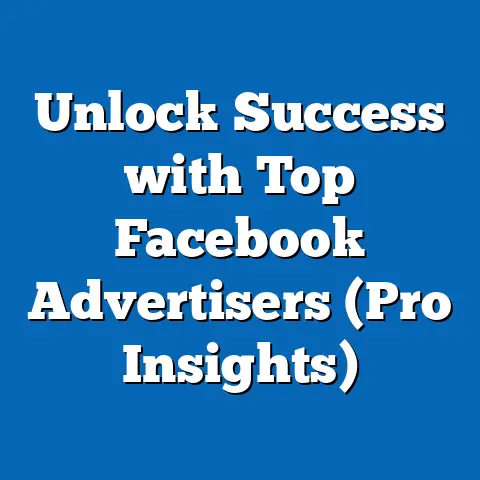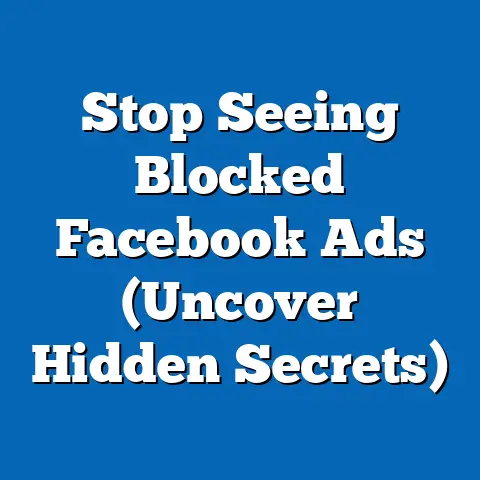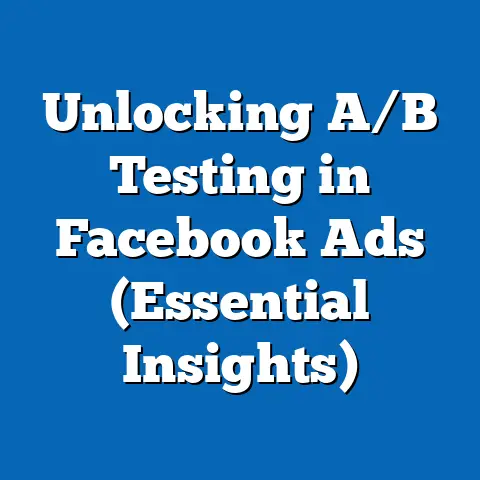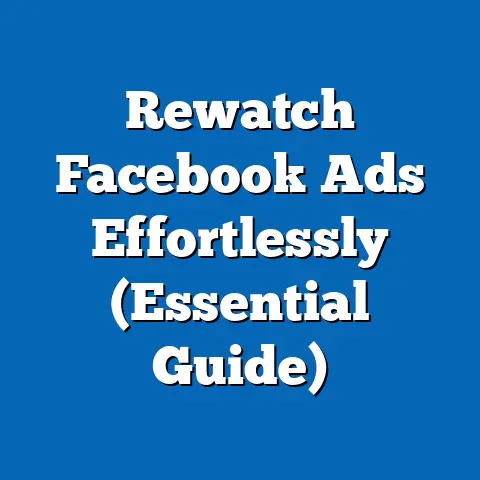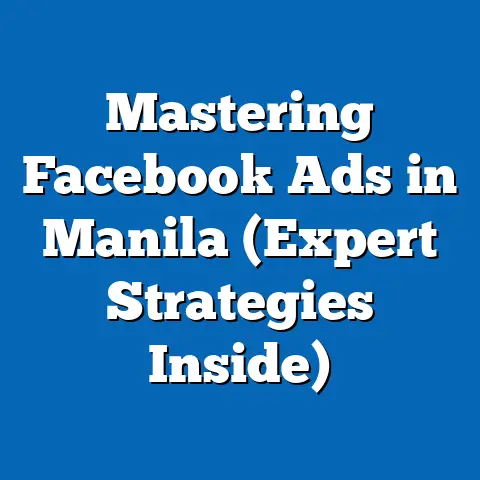Master Facebook Ads for Book Promotion (Proven Strategies)
Have you ever wondered how a relatively unknown superhero like Iron Man became a global phenomenon? Tony Stark wasn’t just a genius inventor; he was a master of marketing. He understood the power of storytelling and the importance of getting his message in front of the right audience. Similarly, as authors, we might have the next great story, but without a smart promotional strategy, it could remain hidden. That’s where Facebook Ads come in. Just like Stark Industries needed a strategic launch, your book needs a well-executed Facebook Ads campaign to reach its full potential. In this guide, I’ll share proven strategies to master Facebook Ads for book promotion, drawing inspiration from the world of pop culture to make your message resonate.
Understanding the Facebook Ads Landscape
Facebook, with its billions of users, isn’t just a social network; it’s a vast advertising platform, especially valuable for authors and publishers. The sheer scale of Facebook allows us to connect with potential readers in ways that traditional marketing simply can’t match.
According to Statista, as of 2023, Facebook has nearly 3 billion monthly active users globally. This massive user base spans diverse demographics, interests, and reading preferences, making it an ideal platform to find your target audience. What I find particularly exciting is Facebook’s ability to target specific groups—romance readers, sci-fi enthusiasts, historical fiction buffs—you name it.
The unique advantages Facebook Ads offer over traditional methods include:
- Targeting Capabilities: Precise demographic, interest, and behavioral targeting.
- Engagement Metrics: Real-time data on ad performance, allowing for quick adjustments.
- Cost-Effectiveness: Control over budget, ensuring efficient ad spending.
- Scalability: Ability to scale campaigns as needed, based on performance.
Crafting Your Message – The Art of Storytelling
Storytelling isn’t just for books; it’s for your ads too. Think about how a trailer for a new Marvel movie hooks you in seconds. It’s not just about showcasing action; it’s about creating a connection. Your Facebook ad copy should do the same.
Elements of a compelling ad copy include:
- Strong Hook: Start with a captivating opening line that grabs attention. For example, instead of “New book out now!” try “What if you could travel through time and change history?”
- Emotional Appeal: Connect with readers on an emotional level. Highlight the themes, characters, and feelings your book evokes.
- Clear Call to Action: Tell readers exactly what you want them to do—”Buy now,” “Read a sample,” or “Join my mailing list.”
I once worked with an author whose fantasy novel was struggling to gain traction. We revamped their ad copy to focus on the emotional journey of the main character, a young woman discovering her magical powers. The result? A 300% increase in click-through rates.
Here’s an example of what works and why:
Ineffective: “Check out my new thriller!”
Effective: “Dive into a world of suspense where every shadow holds a secret. Are you brave enough to uncover the truth?”
The effective ad copy uses a stronger hook and appeals to the reader’s sense of adventure and curiosity.
Targeting Your Audience – Finding Your Readers
Facebook’s audience targeting options are like having a superpower. You can pinpoint your ideal readers with incredible precision. Think of it as casting the perfect actors for your book’s adaptation—you want the right fit.
You can target based on:
- Demographics: Age, gender, location, education, etc.
- Interests: Books, genres, authors, hobbies, etc.
- Behaviors: Purchase history, online activities, etc.
- Lookalike Audiences: People who share characteristics with your existing customers or fans.
Let’s say you’ve written a historical fiction novel set during World War II. You could target fans of movies like “Saving Private Ryan” or TV series like “Band of Brothers.” Similarly, if your book is a young adult dystopian novel, you might target fans of “The Hunger Games” or “Divergent.”
Refining and testing audience segments is crucial. Don’t be afraid to experiment with different combinations of interests and demographics to see what resonates best. Facebook’s Ads Manager provides detailed analytics to help you identify the most responsive groups.
Designing Eye-Catching Visuals
Visuals are the first thing people notice. They’re like the movie poster that makes you decide to watch a film. Your Facebook ad visuals need to be just as compelling.
Tips for creating visually appealing ad graphics:
- Reflect the Book’s Theme: Use colors, fonts, and imagery that align with your book’s genre and tone.
- High-Quality Images: Avoid blurry or low-resolution images.
- Book Cover: Feature your book cover prominently.
- Minimal Text: Keep text to a minimum and use a clear, readable font.
Video ads are increasingly popular and effective. A well-made book trailer can captivate audiences and drive engagement. Think of it as a mini-movie that showcases the best parts of your book.
I remember seeing a book trailer for a fantasy novel that used stunning visual effects and a dramatic voiceover. It felt like a movie trailer, and it immediately grabbed my attention. The author reported a significant increase in sales after launching the video ad campaign.
Budgeting and Bidding Strategies
Budgeting for Facebook ads can feel like navigating a complex financial market, but it doesn’t have to be intimidating. Understanding the basics will help you maximize your ad spend.
- Daily vs. Lifetime Budgets: Daily budgets allow you to spend a set amount each day, while lifetime budgets allow you to spend a fixed amount over the entire campaign duration.
- Cost-Per-Click (CPC) vs. Cost-Per-Impression (CPM): CPC is the amount you pay each time someone clicks on your ad, while CPM is the amount you pay for every 1,000 impressions (times your ad is shown).
Bidding strategies to maximize your ad spend:
- Automated Bidding: Let Facebook automatically set your bids based on your campaign goals.
- Manual Bidding: Set your own bids to control costs and target specific results.
- Bid Caps: Set maximum bid amounts to avoid overspending.
Think of how blockbuster movies allocate their marketing budgets. They invest heavily in initial promotion to create buzz and then adjust their spending based on performance. You can do the same with your Facebook Ads. Start with a modest budget and scale up as you see positive results.
Analyzing Performance Metrics
Tracking your ad performance is crucial for optimizing your campaigns. It’s like reviewing the box office numbers after a movie premiere—you need to know what’s working and what’s not.
Key Performance Indicators (KPIs) to track:
- Click-Through Rate (CTR): Percentage of people who saw your ad and clicked on it.
- Conversion Rate: Percentage of people who clicked on your ad and completed a desired action (e.g., buying your book).
- Cost Per Acquisition (CPA): Cost of acquiring a customer through your ad campaign.
- Return on Ad Spend (ROAS): Revenue generated from your ad campaign divided by the amount spent.
Facebook’s Ads Manager provides a wealth of data. Learn how to interpret this data to make informed decisions. For example, if your CTR is low, you might need to revamp your ad copy or visuals. If your CPA is high, you might need to refine your targeting.
Iterating on ad campaigns based on performance data is essential. Successful franchises adapt their marketing strategies after each film or season, and you should do the same with your Facebook Ads. Constantly test new approaches and refine your strategy based on what works best.
Case Studies of Successful Book Promotions on Facebook
Let’s look at some real-world examples of authors who have successfully used Facebook Ads for book promotion.
Case Study 1: Indie Author Sarah J. Maas
Sarah J. Maas, now a bestselling author, initially used Facebook Ads to promote her debut novel, “Throne of Glass.” She targeted fans of popular young adult fantasy series like “The Hunger Games” and “Harry Potter.” Her ads featured compelling visuals and a strong call to action, leading to a significant increase in sales and visibility.
Key Takeaways:
- Targeted specific interest groups.
- Used high-quality visuals.
- Had a clear call to action.
Case Study 2: Traditional Publisher HarperCollins
HarperCollins used Facebook Ads to promote a new thriller novel. They created multiple ad variations with different headlines, visuals, and targeting options. By A/B testing these variations, they identified the most effective combinations and optimized their campaign for maximum impact.
Key Takeaways:
- A/B tested different ad elements.
- Continuously optimized based on performance data.
- Used a data-driven approach.
These case studies illustrate the power of Facebook Ads when used strategically. By applying similar principles to your own advertising efforts, you can achieve significant results.
Conclusion: Embracing the Power of Facebook Ads for Book Promotion
Mastering Facebook Ads is an essential skill for modern authors. In a competitive market, effective promotion can make all the difference. Just like in pop culture, success often comes from creativity, persistence, and a willingness to adapt.
I encourage you to embrace the strategies discussed in this guide and experiment with your own Facebook ad campaigns. Start small, test different approaches, and continuously refine your strategy based on performance data. With the right approach, you can harness the power of Facebook Ads to reach your target audience and achieve your book promotion goals.
Remember, your story deserves to be heard. With a well-executed Facebook Ads campaign, you can ensure it reaches the readers who will love it. So, go ahead, unleash your inner Tony Stark and launch your book to new heights!

